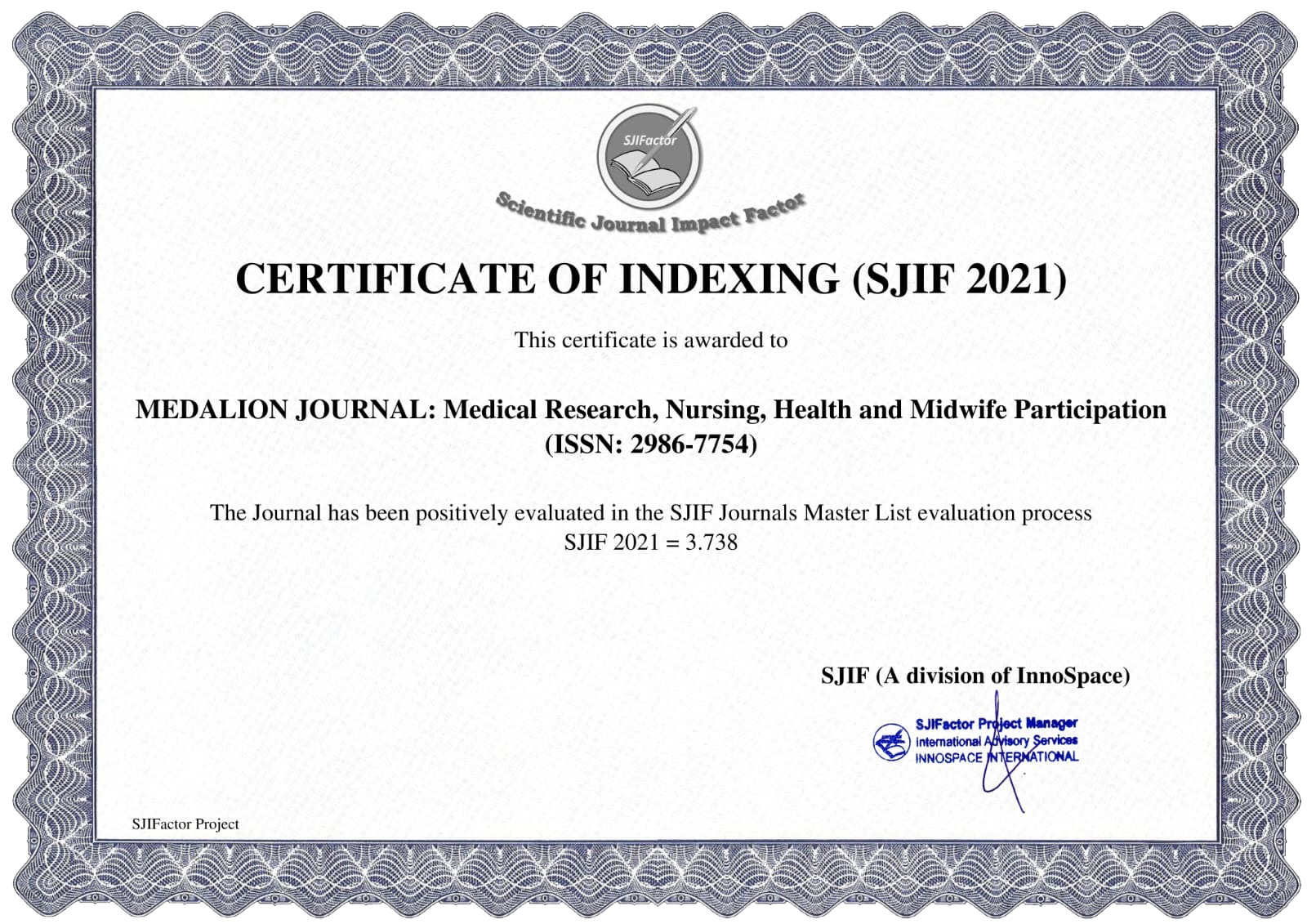EVALUATION OF USE OF DIARRHEA DRUG IN PEDIATRIC PATIENTS AT DOLAT RAYAT HEALTH CENTER KARO DISTRICT
Main Article Content
Ismi Noer Fadilah
Hendri Kurniawan
Diarrhea is a condition in which there is an imbalance in absorption, secretion of water and electrolytes, resulting in a frequency disorder of defecation more than 3 times a day with liquid or semi-solid stools, with or without mucus or blood. Diarrheal disease is still a global problem with a high degree of morbidity and mortality in various countries, especially in developing countries, and is one of the main causes of high child morbidity and mortality in the world. This study aims to determine the profile and rationality of using diarrhea drugs in pediatric patients at the Dolat Rayat Health Center, Karo Regency. This research was conducted using a retrospective descriptive method. The results of the study from the Dolat Rayat Health Center in Karo Regency showed that of the 235 patients who suffered from diarrhea the most were men (63-83%) and at the age of 2 years old infants (48.51%) with an average per patient of 1.28 drug items. The most widely used type of diarrhea drug was zinc (62.67%) in the form of syrup (54.67%). The rationality for using diarrhea medicines based on the 2011 Indonesian Ministry of Health guidelines includes the criteria for right indication (100%), right drug (100%), right patient (99.15%), and right dose (96.17%). Most of the use of diarrhea drugs in pediatric patients at the Dolat Rayat Health Center in Karo Regency is rational.
Agtini, DM (2011). Simasi Diarrhea in Indonesia., Window Bulletin of Health Data and Information, Vol 02, Quarter II, No. 08, 2011, Bakti Husada Indonesian Ministry of Health: Jakarta.
Agustian, L., Sembiring, T., Ariani. (2009). The Role of Zinkum on Children's Growth. Retrieved from: http://sariperdiatri idai.or.id/pdfile/11-4-4.pdf Accessed, 21 January 2018.
Anonymous (2014). ISO Specialist Information on Indonesian Drugs volume 50. Jakarta: Publisher PT. ISFI. Matter. 426.
Budiarto, E., Anggraeni, D. (2002). Introduction to Epidemiology. Edition II: Jakarta: EGC. Matter. 123.
Republic of Indonesia Ministry of Health. (2010). Guidelines for Eradicating Diarrheal Diseases. Jakarta: Directorate General of PPM and PL.
Republic of Indonesia Ministry of Health. (2011). Diarrhea Cross Health Worker's Pocket Book (Five Steps to Overcome Diarrhea). Indonesian Ministry of Health. Matter. 13.
Republic of Indonesia Ministry of Health. (2014). Indonesian Health Profile. Jakarta: Ministry of Health of the Republic of Indonesia. Matter. 25.
Health Office (2014). Sumatra Province Health Profile. North in 2014. North Sumatra Provincial Health Office, page, 25.
Indriani, R., and Asri, EK (2007). New ORS formulation and zinc supplementation in treating diarrhea in children. POM info. 8(3). Matter. 4-5.
Jas, A., (2007), Regarding Recipes and Doses and Prescription Writing Exercises. Ed. 1. Medan: University of North Sumatra Press.
Juffrie, M., Soenarto, SSY, Oswari, H., Arief, S., Rosalinal, Mulyani, NS (2015) Textbook of Indo-Hepatology Children's Gastroenterology. Jakarta: Publishing Agency of the Indonesian Pediatrician Association. Volume 1.
Republic of Indonesia Ministry of Health. (2011). Guidelines for Socialization Management of Toddler Diarrhea. Jakarta: Directorate General of Disease Control and Environmental Health.
Republic of Indonesia Ministry of Health. (2013). Basic Health Research (RISKESDAS) 2013. Health Research and Development Agency, Ministry of Health of the Republic of Indonesia. Jakarta: Ministry of Health of the Republic of Indonesia. Matter. 85.









